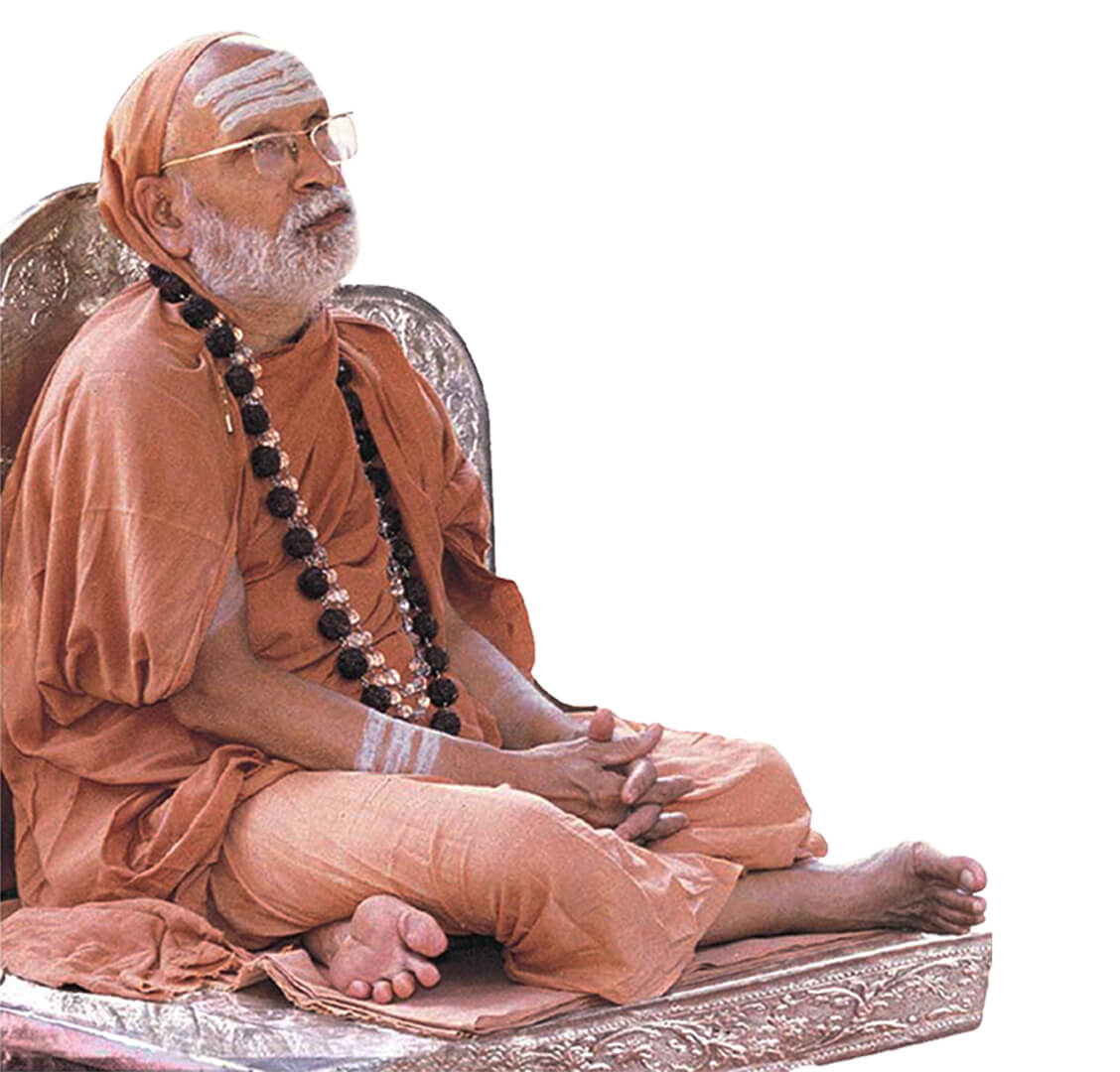
When staying in Narasimhavana with His Guru, His Holiness used to go every evening to behold Sharadamba and remained there for up to an hour. Once, on His return, His Guru advised His Holiness as follows:
“When walking, one should think that one is a wave in the ocean that is the atman. When seated one should think that one is a gem strung on the string of consciousness. Whenever some object is seen, the reflection should not be, ‘This object is now visible.’ One must think ‘Objectless consciousness has now become associated with objects’. When lying down, one should think that one is immersed in the ocean of bliss. Amongst the embodied, that seeker of liberation who leads one’s life contemplating in this fashion is indeed the one who abides within, in the atman. Therefore, when walking, sitting, perceiving objects and even when lying down, this is how we must conduct our life.”
No sooner had the Guru completed His instruction, His Holiness sincerely strove to practice the same. Since His Holiness’s contemplation clashed now and then with His karma-yoga, His Guru resolved this by directing Him to focus His efforts on contemplating on the atman. When this contemplation came in the way of His Holiness enjoying the presence of Sharadamba in the temple, mentally worshipping Narasimha and the like, the Guru clarified, “while the knowledge of the atman of a jivanmukta (one liberated while living) remains undisturbed by any thoughts and bodily activity, the case of contemplation by a spiritual aspirant is different. So, for the present, do your mental worship and the like as before and practice contemplation on the atman at other times.”
His Holiness had no more fundamental difficulties and by His Guru’s grace, the fourfold contemplation advocated by the senior Jagadguru became effortless for His Holiness sometime before His attaining sixteen years of age in 1933.